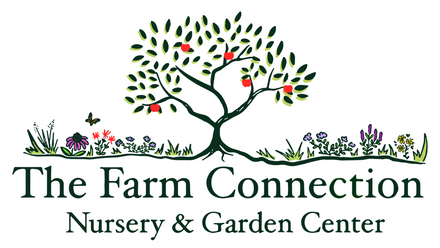Witchhazel, Vernal, Bare Root
Late-Winter Blooms for Early Pollinators
Witchhazel, Vernal, Bare Root - Bare Root / 6-18" Seedling is backordered and will ship as soon as it is back in stock.
Couldn't load pickup availability
Delivery and Shipping
Delivery and Shipping
Make sure to thoroughly review our entire "Shipping, Returns, Refunds, and Our Guarantee" page for all relevant details about ordering from our store.
Making a purchase from our store constitutes an agreement to all the conditions outlined in those policies.
We appreciate your support and look forward to being your favorite plant provider!
Subscribe to our newsletter
Sign up for exclusive offers.
Witchhazel, Vernal (Hamamelis vernalis)
Vernal Witchhazel is a unique and valuable native shrub that brightens the late winter landscape with fragrant, ribbon-like flowers that bloom when few other plants dare. Native to the Ozark Plateau of Missouri, Arkansas, and Oklahoma, this deciduous shrub offers vital early-season nectar for pollinators, vibrant fall foliage, and reliable performance in rain gardens, woodland edges, and streambanks. With its ecological resilience and multi-season interest, Hamamelis vernalis is a must-have for regenerative landscapes seeking to extend the pollinator season.
Key Characteristics
-
Blooms in late winter when few others do
Vernal Witchhazel flowers from January to March, depending on climate—long before most other shrubs break dormancy. Its spidery yellow to coppery-red petals emit a sweet, spicy fragrance and offer rare winter nectar for native bees and early-emerging insects. -
Excellent early-season pollinator support
While few pollinators are active in winter, those that are—such as early bees and some gnats—are drawn to its blooms. This makes H. vernalis a critical species in pollinator succession planting and a useful early resource for native food webs. -
Thrives in wet soils and streamside plantings
Naturally found along streambanks and in moist woods, Vernal Witchhazel tolerates wet, heavy soils and seasonal flooding. It’s an excellent choice for rain gardens, bioswales, and restoration of moist, shaded or partially sunny areas. -
Attractive fall foliage and dense form
Leaves turn brilliant shades of gold, orange, and red in autumn, providing strong seasonal color. Its dense, rounded growth habit makes it ideal for hedgerows, wildlife shelter, and understory structure in forest gardens. -
Low-maintenance and deer-resistant
Once established, Vernal Witchhazel is long-lived, pest-resistant, and not preferred by deer—making it reliable in both wild and cultivated landscapes with minimal upkeep.
Product Details
- Native range: Ozark region (MO, AR, OK), naturalized in parts of the Midwest and East
- Plant life cycle: Deciduous Shrub
- Sun requirements: Full sun to part shade
- Soil requirements: Medium to medium-wet; prefers moist, well-drained soils but tolerates clay and poor drainage
- Mature height: 6–10 feet
- Bloom time: Late winter to early spring (January–March)
- Bloom color: Yellow, copper, or reddish with a sweet fragrance
- USDA Hardiness zones: 4–8
Vernal Witchhazel brings essential winter nectar, bold fall color, and moisture-tolerant reliability to gardens and restoration sites. It’s a season-extending pollinator plant and a resilient performer in diverse planting designs.
-
Sun RequirementsPart Sun/Shade, Full Sun
-
Soil RequirementsMedium
-
Bloom ColorYellow, Red
-
Bloom TimeJanuary, February, March
-
USDA Hardiness ZonesZone 4, Zone 5, Zone 6, Zone 7, Zone 8
Payment & Security
Payment methods
Your payment information is processed securely. We do not store credit card details nor have access to your credit card information.




